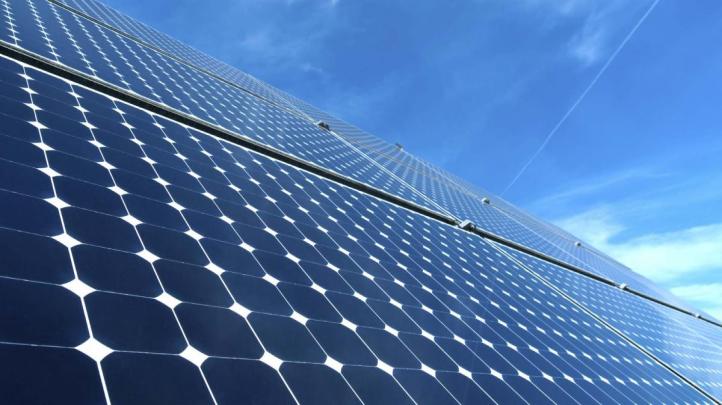NEWS DETAIL

The global push toward clean and renewable energy has placed the photovoltaic (PV) industry at the forefront of the energy transition. While solar panels and advanced inverters often dominate the conversation, the materials behind these technologies are just as critical. One such unsung hero is quartz—more specifically, high-purity quartz (HPQ). This mineral is essential to the manufacturing of silicon, the semiconductor at the heart of most solar cells.
In this article, we explore the indispensable role of quartz in the photovoltaic industry—from raw material to refined performance enhancer.
From Quartz to Silicon
Quartz, primarily composed of silicon dioxide (SiO?), serves as the foundational raw material for producing silicon metal.
The transformation from quartz to solar-grade silicon involves several steps:
-
Mining and Selection: Only specific quartz deposits with low levels of impurities (especially iron, titanium, and aluminum) are suitable for photovoltaic use.
-
Thermal Reduction: Quartz is reduced in electric arc furnaces using carbon to produce metallurgical-grade silicon (MG-Si).
-
Purification: MG-Si is then subjected to further refining through processes such as the Siemens or fluidized bed reactor (FBR) methods to create polysilicon with 99.9999% purity or higher.
This refined silicon is later formed into ingots and sliced into wafers used in most solar panels today.

Why High-Purity Quartz Matters in Solar Energy
Not all quartz is created equal. The level of purity in quartz directly impacts the performance, yield, and long-term reliability of solar cells.
Here’s why:
-
Contaminant Control: Impurities like boron or phosphorus, even in trace amounts, can alter the electrical characteristics of the resulting silicon and reduce solar cell efficiency.
-
Consistency: High-purity quartz ensures uniformity in polysilicon production, minimizing defects and increasing wafer quality.
-
Thermal Stability: Quartz crucibles used in crystal pulling (e.g., Czochralski process) require exceptional purity and resistance to thermal stress, both of which high-purity quartz provides.
In essence, high-purity quartz enables consistent production of high-performance silicon, making it a strategic resource in solar manufacturing.
Applications of Quartz in the PV Industry
Beyond its role as a feedstock for silicon, quartz plays multiple supporting roles in the PV value chain:
-
Quartz Crucibles: These vessels hold molten silicon during ingot formation and are critical for achieving high-quality crystal growth.
-
Fused Quartz Glass: Used as the protective front layer in some solar modules due to its excellent UV transmission and weather resistance.
-
Process Tubing and Reactors: Quartz is also used in the equipment that handles high-temperature and corrosive processes during polysilicon manufacturing.
The versatility and thermal endurance of quartz make it invaluable across different stages of PV production.
How Does Purity Influence Efficiency?
The efficiency of a solar panel is heavily influenced by the purity of the silicon it contains, which in turn depends on the purity of the original quartz.
Here’s how:
-
Electrical Conductivity: Impure silicon can suffer from increased recombination of charge carriers, reducing overall efficiency.
-
Yield Rates: Higher purity materials result in fewer defects, allowing more of the silicon ingot to be sliced into usable wafers.
-
Longevity: Panels made from high-purity silicon tend to degrade less over time, maintaining output for 25+ years.
Thus, starting with ultra-pure quartz helps ensure that the final product—solar panels—delivers maximum power output over its lifetime.
The Future of Quartz in the Photovoltaic Industry
As solar technologies evolve toward higher efficiency and lower cost, the role of quartz is set to grow:
-
Larger Wafers, Bigger Crucibles: The trend toward larger wafers (e.g., M10, G12 formats) demands correspondingly larger and purer quartz crucibles.
-
New Materials, Same Foundation: Even in emerging technologies like heterojunction or tandem solar cells, high-quality silicon—and thus quartz—remains critical.
-
Supply Chain Strategy: With demand for high-purity quartz increasing, countries and manufacturers are investing in domestic sources and vertical integration.
Innovation in quartz purification and processing will remain a backbone of solar manufacturing in the years ahead.
Quartz may not be the flashiest component in the solar value chain, but it is unquestionably one of the most vital. Its role—from raw material to high-purity crucibles—touches nearly every aspect of photovoltaic manufacturing. As the industry advances, the importance of sourcing, refining, and innovating with quartz will only grow. For stakeholders across the PV ecosystem, understanding and investing in high-purity quartz is not just good science—it’s smart business.





